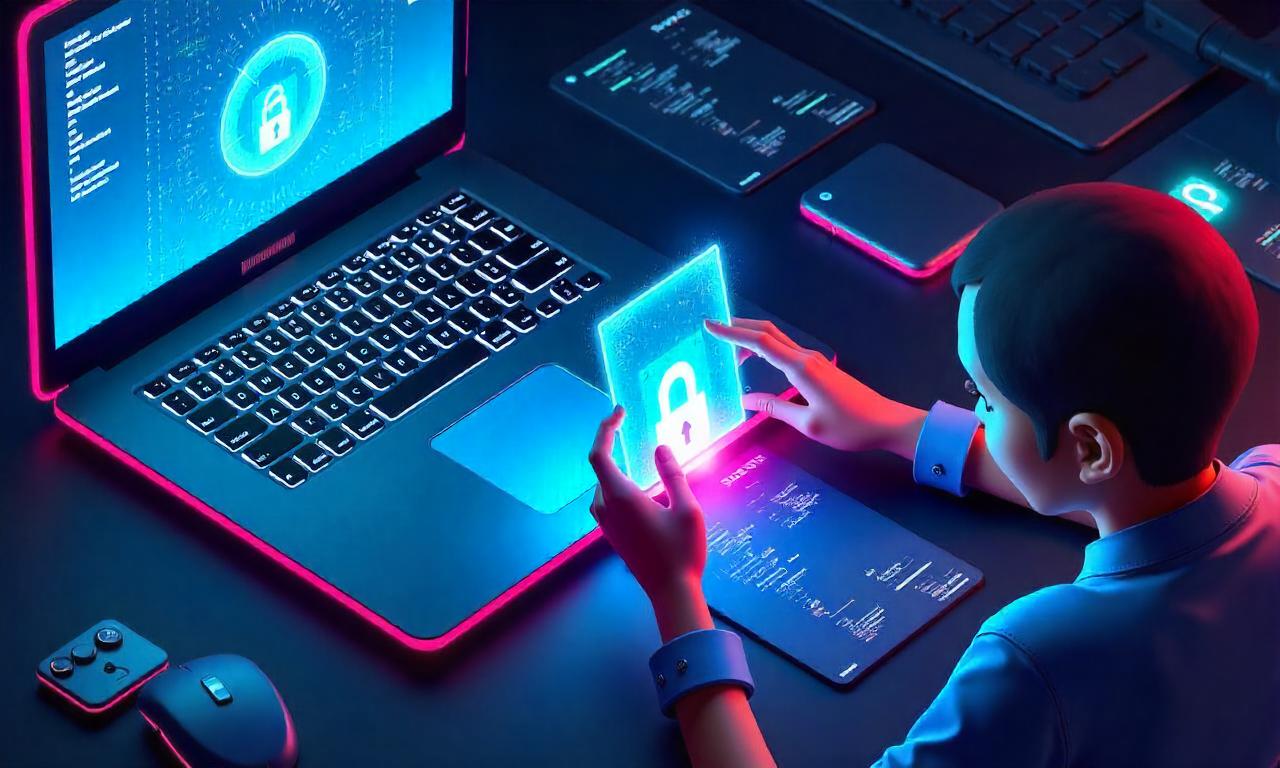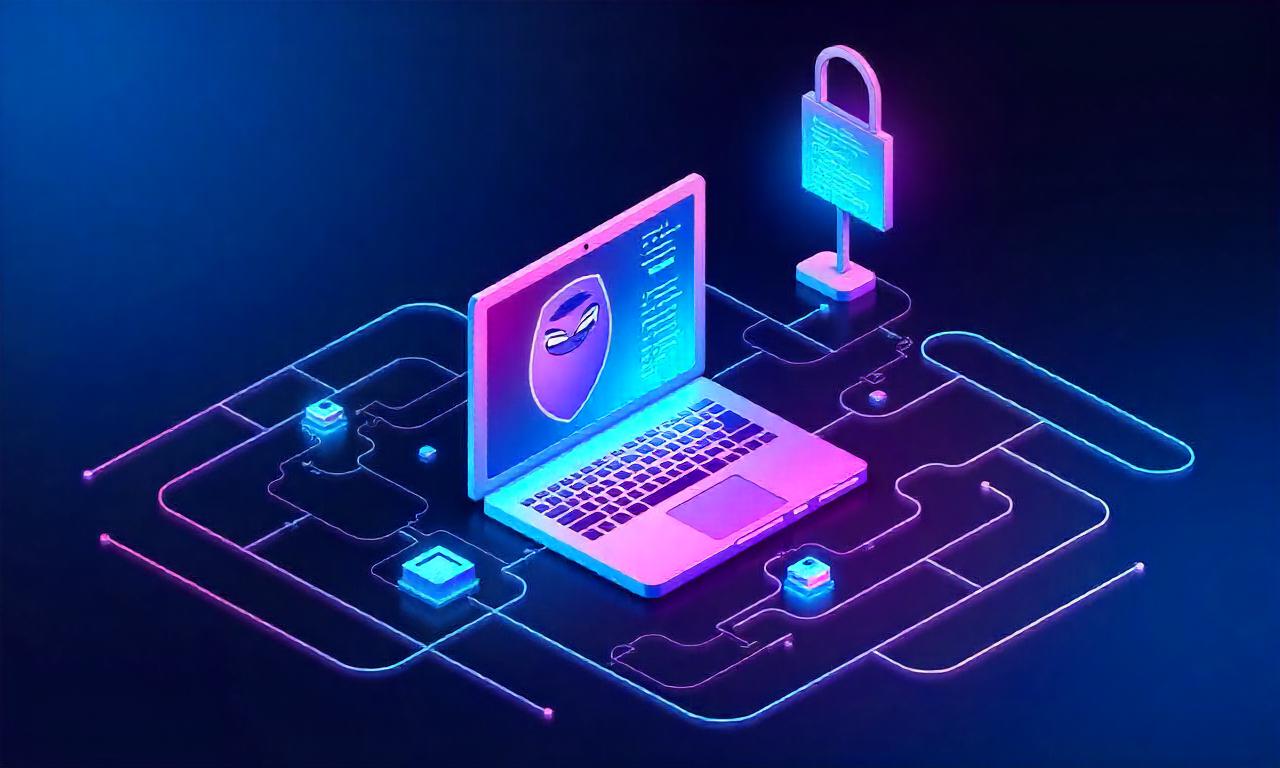In today’s digital age, how to learn cybersecurity from scratch has become one of the most sought-after skills. Whether you're a student, a career-changer, or simply curious about protecting digital assets, mastering cybersecurity offers a rewarding path with high demand and competitive salaries. This beginner's guide will walk you through the essential steps, resources, and strategies to build a solid foundation in cybersecurity. By following this structured approach, you'll not only gain knowledge but also develop practical skills that are critical in a world where cyber threats are constantly evolving.
—
Table of Contents
ToggleUnderstanding the Basics of Cybersecurity
Before diving into the technical aspects, it’s crucial to understand the basics of cybersecurity. Cybersecurity is the practice of protecting internet-connected systems—such as hardware, software, and data—from cyber threats. These threats can range from malicious attacks like hacking and phishing to accidental data breaches. By grasping the fundamental concepts, you’ll be better equipped to navigate the complexities of the field.
Cybersecurity is divided into several key areas, including network security, application security, information security, and operational security. Each of these domains focuses on safeguarding different components of a system. For example, network security ensures that data transmitted over networks is secure, while application security focuses on protecting software applications from vulnerabilities. Understanding these areas will help you identify which specializations align with your interests.
To truly how to learn cybersecurity from scratch, start by defining your learning goals. Are you interested in penetration testing, ethical hacking, or network administration? Your goals will determine the learning path and resources you need. Additionally, familiarize yourself with common cyber threats and attack vectors, such as malware, ransomware, and social engineering. This knowledge will give you a clearer picture of what you’re working toward and how to stay ahead of potential risks.
—
Setting Up a Learning Plan
A well-structured learning plan is the cornerstone of success in cybersecurity. Without a clear roadmap, even the most dedicated learners can feel overwhelmed. Begin by identifying your learning goals and then break them down into manageable steps. This approach ensures that you stay focused and progress systematically.
1. Define Your Learning Goals
Your goals will shape your learning journey. For example, if you aim to become a certified cybersecurity professional, you might need to prioritize learning specific skills such as network security, cryptography, or risk management. Alternatively, if you're interested in a more general understanding, focus on foundational concepts like threat detection and data protection.
2. Choose the Right Resources
Selecting the right resources is critical. Free platforms like Cybrary, Udemy, and freeCodeCamp offer beginner-friendly courses. Paid platforms like Coursera and LinkedIn Learning provide structured programs with certifications. Additionally, books such as Cybersecurity for Beginners by Jason Bloomberg and The Cybersecurity Guide for Beginners by Chris Hoff can serve as valuable references. Don’t forget to leverage online communities and forums for real-time support.
3. Create a Study Schedule
Consistency is key in learning cybersecurity. Allocate specific time slots for studying each week, and use a calendar to track your progress. For instance, dedicate two hours daily to theoretical concepts and one hour to hands-on practice. This habit will help you retain information and build practical skills over time.
—
Building Foundational Skills
Once you have a clear plan, the next step is to build foundational skills. These skills form the bedrock of your cybersecurity expertise and are essential for advancing in the field. Start with the basics and gradually progress to more complex topics as your confidence grows.
1. Learn Programming Languages
Programming is a vital skill in cybersecurity. Begin with languages like Python, which is widely used in ethical hacking and network analysis. Python’s simplicity makes it an excellent choice for beginners, while its versatility allows you to tackle advanced tasks later. Other useful languages include C, Java, and JavaScript, which are often used in system programming and web security.
2. Master Networking Fundamentals
Understanding networking is crucial because cyberattacks often target network vulnerabilities. Learn about TCP/IP protocols, subnetting, and network devices like routers and switches. Tools such as Wireshark and Nmap will help you analyze network traffic and identify potential threats. Hands-on practice with virtual networks (using platforms like GNS3 or Cisco Packet Tracer) will reinforce your theoretical knowledge.
3. Get Familiar with Operating Systems
Operating systems are the backbone of cybersecurity. Focus on mastering Linux, as it is the primary system used in penetration testing and server management. Learn commands for file manipulation, process monitoring, and user management. Windows is also important, especially for enterprise environments.
—
Hands-On Practice and Experimentation
Theoretical knowledge is only part of the equation; hands-on practice is where you truly apply what you’ve learned. Cybersecurity requires practical skills, such as configuring firewalls, analyzing malware, and performing penetration tests. Start experimenting with virtual environments and tools to gain real-world experience.
1. Set Up a Lab Environment
A dedicated lab environment allows you to practice without risking real systems. Use virtual machines (VMs) to simulate networks and test security measures. Platforms like VMware, VirtualBox, and Docker are great for this. Additionally, cloud-based labs like Hack The Box or TryHackMe provide access to pre-configured environments with real-world scenarios.
2. Practice with Tools and Techniques
Familiarize yourself with essential cybersecurity tools. For example, use Kali Linux for penetration testing, Metasploit for exploit development, and Wireshark for packet analysis. Practice techniques like packet sniffing, port scanning, and vulnerability assessment. This will help you understand how attackers operate and how to defend against them.
3. Participate in Capture the Flag (CTF) Challenges
CTF challenges are a fun and effective way to practice cybersecurity skills. These challenges simulate real-world attacks and require you to solve puzzles to gain access to systems. Platforms like CTFtime and CTF.io host various competitions, from beginner-friendly to advanced levels. CTFs improve problem-solving abilities and provide a collaborative learning environment.
—
Exploring Advanced Topics and Specializations
As you progress, it’s time to explore advanced topics and choose a specialization. Cybersecurity is a broad field with numerous sub-disciplines, such as cryptography, incident response, and digital forensics. Identifying your niche will help you focus your learning and build expertise.
1. Dive into Cryptography
Cryptography is the science of securing data through encryption techniques. Learn about symmetric and asymmetric encryption, hash functions, and key exchange protocols. Tools like OpenSSL and GnuPG are essential for implementing and testing cryptographic solutions. Understanding cryptography is crucial for protecting sensitive information and securing communications.
2. Study Incident Response and Forensics
Incident response involves detecting, containing, and mitigating security breaches. Learn the phases of incident response, such as preparation, detection, containment, eradication, and recovery. Digital forensics focuses on investigating cyber incidents to gather evidence. Tools like Autopsy and Volatility can help you analyze data and reconstruct events.
3. Explore Specializations
Cybersecurity offers diverse specializations. If you're interested in network security, study firewalls and intrusion detection systems. For a career in ethical hacking, focus on penetration testing and vulnerability assessment. Other specializations include cloud security, application security, and compliance. Research each area to find what excites you the most.
—
Gaining Practical Experience through Projects
Gaining practical experience through projects is one of the best ways to solidify your knowledge and showcase your skills. Start by working on small-scale projects that simulate real-world scenarios. These projects not only reinforce your learning but also build a portfolio to demonstrate your abilities to potential employers.
1. Build a Personal Network Security Lab
Create a virtual network that mimics a real-world environment. Use tools like Cisco Packet Tracer or GNS3 to set up routers, switches, and firewalls. Practice configuring these devices and testing their security features. This project will help you understand network architecture and security protocols.
2. Develop a Vulnerability Assessment Project
Learn to identify vulnerabilities in a system. Use tools like Nmap and Nessus to scan networks and detect weaknesses. Create a report that outlines your findings and recommends solutions. This project will improve your analytical skills and give you hands-on experience with security auditing.
3. Create a Simple Malware Analysis Tool
Malware analysis is a critical skill in cybersecurity. Start by analyzing benign malware to understand how it operates. Use tools like IDA Pro and Ghidra to disassemble and reverse-engineer code. This project will enhance your understanding of malware behavior and help you develop detection techniques.

—
Networking and Community Involvement
Networking and community involvement can significantly accelerate your learning and career growth in cybersecurity. Engaging with experts and peers provides opportunities for collaboration, mentorship, and staying updated on the latest trends.
1. Join Cybersecurity Communities
Participate in online forums like Reddit’s r/cybersecurity or Stack Overflow. These platforms allow you to ask questions, share knowledge, and stay informed about new threats and tools. Joining groups on LinkedIn or Discord can also connect you with professionals in the field.
2. Attend Cybersecurity Events and Conferences
Conferences such as DEF CON, Black Hat, and RSA Conference offer insights into cutting-edge cybersecurity technologies and techniques. Virtual events like Cybersecurity Awareness Month provide accessible opportunities to learn about best practices and industry trends. Attending these events helps you network with experts and gain inspiration for your career path.
3. Collaborate on Open Source Projects
Contributing to open source cybersecurity projects is an excellent way to apply your skills and learn from experienced developers. Platforms like GitHub host numerous projects, from vulnerability scanners to password crackers. Collaborating on these projects will improve your coding and problem-solving abilities while building a professional network.
—
Certifications and Advanced Education
Earning certifications and advanced education can boost your credibility and open doors to better opportunities in cybersecurity. Certifications validate your skills, while advanced courses help you deepen your expertise.
1. Choose the Right Certifications
Popular certifications for beginners include the CompTIA Security+ and Certified Ethical Hacker (CEH). These certifications provide a solid foundation and are often prerequisites for more advanced ones. Advanced certifications like the Certified Information Systems Security Professional (CISSP) and Offensive Security Certified Professional (OSCP) are ideal for those aiming for leadership roles or specialized expertise.
2. Enroll in Advanced Courses
Advanced courses on platforms like Coursera or edX offer in-depth knowledge on topics such as cloud security, ethical hacking, and digital forensics. For example, the Cybersecurity Fundamentals course on Coursera covers core concepts, while Introduction to Cybersecurity on edX provides a comprehensive overview. These courses are structured to build upon foundational knowledge and prepare you for real-world challenges.
3. Consider Higher Education
For those seeking a more formal education, consider a degree in cybersecurity or computer science. Universities like MIT and Stanford offer specialized programs that combine theory with practical application. Additionally, online programs from institutions like the University of Maryland provide flexible learning paths tailored for career advancement.
—
Staying Updated with the Latest Trends
Cybersecurity is a rapidly evolving field, so staying updated with the latest trends is essential. Regularly following news and research ensures you remain relevant and prepared for emerging threats.
1. Follow Cybersecurity News and Research
Subscribe to newsletters like Dark Reading and Cybersecurity Weekly to stay informed about the latest threats and innovations. Follow reputable sources like the SANS Institute and NIST on social media for updates on security standards and best practices.
2. Explore Emerging Technologies
Stay ahead of the curve by studying emerging technologies such as AI in cybersecurity, IoT security, and quantum computing. These technologies are reshaping the field and creating new challenges. For example, AI is being used to detect anomalies in network traffic, while IoT devices introduce new attack surfaces.
3. Attend Webinars and Workshops
Webinars and workshops provide opportunities to learn from experts without the need for travel. Platforms like LinkedIn Learning and Pluralsight host free and paid sessions on topics like cloud security and threat intelligence. These sessions are often shorter and more focused than full courses, making them ideal for quick learning.
—
Real-World Applications and Career Pathways
Understanding how to apply cybersecurity knowledge in real-world scenarios is crucial for career growth. Real-world experience not only strengthens your skills but also helps you identify opportunities for employment.
1. Internships and Entry-Level Jobs
Seek internships or entry-level positions to gain practical experience. Companies often offer internships in cybersecurity for students and new professionals. These roles provide hands-on experience and help you build a professional network.
2. Start with Entry-Level Positions
Entry-level positions like Security Analyst or Cybersecurity Technician offer a chance to work with security systems and tools. These roles are ideal for beginners and provide a foundation for more advanced positions.
3. Continuously Improve and Adapt
Cybersecurity is a dynamic field, so continuous learning is necessary. Stay updated with industry certifications and advanced training. For example, completing the Certified Information Systems Security Professional (CISSP) or Offensive Security Certified Professional (OSCP) can significantly enhance your career prospects.
—
FAQ: Common Questions About Learning Cybersecurity from Scratch
Q1: What are the best resources to learn cybersecurity from scratch?
A1: Beginners should start with free resources like Cybrary, freeCodeCamp, and YouTube tutorials. Paid options include Coursera, Udemy, and LinkedIn Learning. Books such as Cybersecurity for Beginners by Jason Bloomberg and The Cybersecurity Guide for Beginners by Chris Hoff are also excellent.
Q2: How long does it take to learn cybersecurity from scratch?
A2: The time varies depending on your dedication and learning pace. On average, it takes 6–12 months to gain a foundational understanding and qualify for entry-level positions. Advanced certifications may take additional time, but consistent practice accelerates progress.
Q3: What skills are necessary to learn cybersecurity from scratch?
A3: Essential skills include programming (Python, C), networking fundamentals, operating systems (Linux, Windows), and knowledge of tools like Wireshark and Metasploit. Problem-solving and analytical thinking are also crucial.
Q4: Are there any recommended certifications for beginners?
A4: Yes, certifications like CompTIA Security+ and Certified Ethical Hacker (CEH) are ideal for beginners. These certifications validate your skills and are often prerequisites for advanced credentials.
Q5: How can I stay motivated while learning cybersecurity from scratch?
A5: Set clear goals, track your progress, and celebrate small achievements. Joining communities and participating in CTF challenges can also keep you engaged and inspired.
—
Conclusion
Learning cybersecurity from scratch is an exciting journey that requires dedication, curiosity, and consistent practice. By understanding the basics, building foundational skills, and engaging in hands-on projects, you’ll develop the expertise needed to thrive in this dynamic field. As you progress, gaining certifications and staying updated with industry trends will further enhance your knowledge and career prospects. Remember, the key to success lies in planning, practicing, and connecting with the cybersecurity community. With the right approach, you can transform your passion for technology into a rewarding career.
—
Summary
How to Learn Cybersecurity from Scratch: A Beginner's Guide outlines a comprehensive roadmap for aspiring cybersecurity professionals. The article begins by emphasizing the importance of how to learn cybersecurity from scratch and introduces key concepts. It then guides readers through setting up a learning plan, building foundational skills in programming, networking, and operating systems, and gaining hands-on experience with lab environments and CTF challenges. Advanced topics such as cryptography, incident response, and specializations are explored, along with the role of certifications and real-world applications. The article concludes with a FAQ section addressing common concerns and highlights the value of staying updated with industry trends. By following these steps, beginners can systematically develop the skills and knowledge required to excel in cybersecurity.
















